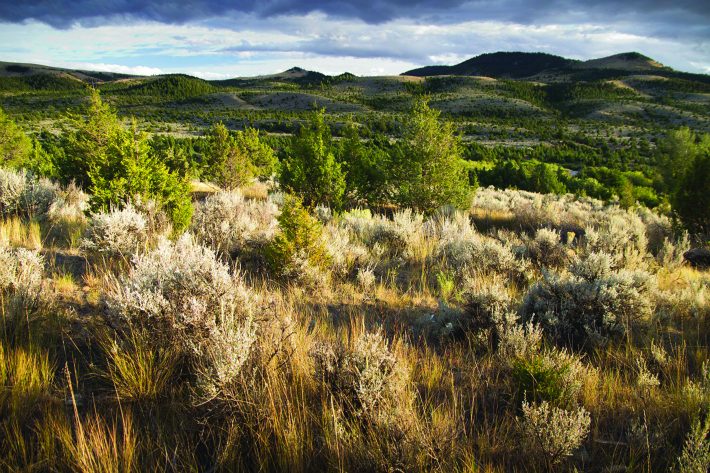Researchers quantify forage yield gap caused by woody encroachment
USDA press release.
New research quantifies the economic impacts of lost herbaceous production from tree encroachment throughout the American west. The findings are published in the British Ecological Society’s Journal of Applied Ecology.

The ecological impacts of woody plants expanding onto U.S. rangelands are well documented. When trees move in, grassland wildlife move out, herbaceous plants are displaced, water supplies and soil moisture decline, forage production (grasses and forbs) for livestock and wildlife drops, and the risk of severe wildfires increases. These impacts affect western sagebrush-steppe rangelands and the Great Plains grasslands alike, where much of the landscape is privately owned and used for ranching.
New research from University of Montana researchers affiliated with Working Lands for Wildlife quantifies the economic impacts of lost herbaceous production throughout the American west. This research was supported by the USDA’s Natural Resources Conservation Service’s Conservation Effects Assessment Project – Wildlife Component, the Arkansas Game and Fish Commission, and the Bureau of Land Management.
Led by Dr. Scott Morford, the team tapped into the power of the Rangelands Analysis Platform to track changes in vegetation cover and biomass production across western rangelands from 1990 to 2019. The researchers analyzed and mapped these data to understand how herbaceous production (grass and forb biomass) changed when trees moved in and converted grasslands to woodlands and forests.
The team then quantified the “yield gap” caused by tree encroachment for each county in 17 western states. Yield gap refers to the difference between the actual herbaceous production (after trees had moved in) and potential herbaceous production (in the absence of trees). The team used the gap in grassland yield to estimate the economic value of lost forage in terms of tonnage and dollars.
Across all western U.S. rangelands, tree expansion now creates an annual yield gap of roughly 5-6%. These large year-over-year losses are similar in magnitude to impacts on commodity crops caused by extreme drought but have a longer-lasting impact. The team estimated the total value of lost production due to expanding trees at $4.8 billion from 1990 to 2019. In 2019 alone, the yield gap exceeded $300 million in lost forage.
The team also found that tree cover increased in more than 25% of western rangelands during this 30-year period. Grasslands saw an 85% increase in tree cover, with roughly 8% of tree-free grasslands transitioning to woodlands, in turn elevating the vulnerability of adjacent tree-free rangelands to future degradation.
WLFW is directly addressing woody expansion across both landscapes through its biome-specific frameworks for conservation action. These plans call for proactive management of woody species through a Defend the Core, Grow the Core, Mitigate Impacts strategy.
This conservation strategy flips the old, expensive, and ineffective way of thinking about this threat. Instead of focusing time and limited dollars on treating areas that have already transitioned to a woodland state, this strategy focuses on preventing treeless cores from being taken over by trees. Once core areas are protected, managers can expand intact cores by stopping further tree expansion. In areas where rangelands have fully transitioned to woodlands, conservation partners can enact efforts to mitigate impacts and help communities and wildlife adapt.
You can read the full article (for a limited time) here:
https://besjournals.onlinelibrary.wiley.com/doi/10.1111/1365-2664.14293
Like what we stand for?
Support our mission and help develop the next generation of ecologists by donating to the British Ecological Society.